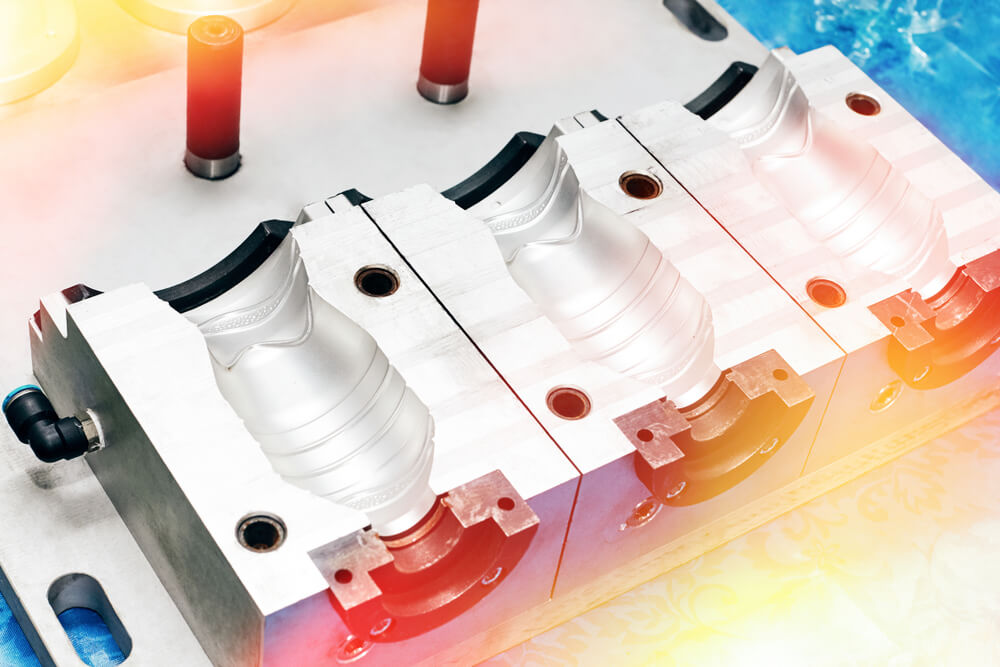Noticed Gate Blush in Injection Molding? Reasons and Fixes for Gate Blush Marks
- 2022.10.28
 Flying Tiger
Flying Tiger
Plastic injection molding is one of the most efficient ways to manufacture plastic parts. Whether it's creating specialized complete fabrications or mass-producing parts of a greater whole, injection molding is often the first choice for engineers and product designers. With only 15 to 120 seconds of downtime between each cycle, the process is incredibly fast and can present multiple benefits in terms of time and budget to customers.
Unfortunately, as functional as the entire system is, it’s not infallible. In some cases, its efficiency can even be its downfall, gate blush in injection molding is an obvious example.
Gate blush refers to the deposition of plastic material on the gate after the injection process is complete. It's a visual imperfection that appears as light smearing or discoloration around the gates. And with a gate blush issue, time is your enemy – which means that you should know how to fix the issue as soon as it is detected.
What Is Gate Blush (Gate Vestige) In Injection Molding?
Before we get into the details of preventing and fixing the Blush, we first need to understand why it occurs. This phenomenon is officially called a "gate vestige," although it’s more well-known in the industry as the "blush" or "gate blush."
Gate blush typically happens on plastics that undergo the molding process, and it almost always occurs in the gate areas of the manufactured plastic component. This results in a hazy discoloration and is thus more liable to garner quality complaints from customers. More than that, gate blush also leads to a weaker plastic configuration in the discolored part, negatively impacting the product safety and your component’s overall integrity.
Thus, it’s crucial to solve gate blush issues in your injection molding system. Not only is it visually unappealing, but it also directly reduces the strength of your component. Depending on what plastic component you are creating, a gate blush defect can cause undesirable chain reactions if not spotted on time.
How Do You Spot the Gate Blush Phenomenon?
Spotting gate blushing in injection molding is the first step to improving your system's total operational capacity. However, sometimes it can be difficult to spot, especially if your manufacturing process is automated and the incident happens between scheduled quality checks.
Fortunately, spotting the phenomenon is easier if you know what to look for. The best way to spot gate blushes in an injection molding process is by looking for noticeable differences in the color of the plastic, which may appear darker or cloudier than the surrounding areas.
This color difference mainly occurs at the gate location of a component—the area where the last of the molten plastic is injected into the part. Regardless of its exact location, the discoloration will always be within the vicinity of the gate.
Hence, to check whether your parts are experiencing gate blush, start at the gate area of the plastic part that you’re manufacturing. If it has a different color and seems to be weaker than the parts around it, then you’ve got a gate blush issue on hand.
Machine Causes for Gate Blush
To solve gate blushing in injection molded parts, it’s essential to understand the multiple reasons why gate blushing can occur. Here, we have three main categories for potential causes, machine, mold, and material or operations. In this section, let’s talk about machine causes:
- Injection fill speed and pressure. When the mold is filled too quickly, the molten plastic reacts to the additional pressure created when the flow is restricted on the gate.
- Melt temperature. The right melt temperature creates the ideal flow of materials to the mold, which ensures the success of the injection mold method. However, if the melt temperature is too high or too low, it can negatively impact your product.
- Nozzle diameter and temperature. Incorrect nozzle diameters can interfere with the pressure of the flow, making the material react negatively. This happens more often with down-flowing runners and gates.
Mold Causes: Mold Temperature as a Key to Beating the Blush
One characteristic of a gate blush in injection molding is that the defect on the component often doesn’t reflect the characteristics of a mold. However, there are instances when a specific characteristic of the mold is to blame for the event, such as in the following circumstances.
- Low mold temperatures. If your mold temperatures are too low, it can impede the flow of the material and prevent it from packing correctly. Having just the right temperature in your mold is the key to having far-flowing material that packs great. And Flying Tiger offers various temperature controllers that can help you do just that.
- Improper venting or gate location. If your gate is placed on areas that fill first, the material can’t harden properly and can cause imbalances as the melted material begins to solidify.
Material and Operation Causes for Gate Blush
Lastly, there may also be material and operational causes for the occurrence of gate blush.
- Excessive moisture. Depending on your material, too much moisture present during the process may alter how the material heats up and flows. This is especially true for polystyrene and polypropylene. Our range of dehumidifiers and dryers is effective in reducing and removing moisture from plastic pellets, which prevents gate blush from happening.
- Poor mixing. If your material isn’t mixed correctly, the gate can be imbalanced, which can cause the material to react poorly under pressure.
- Degraded materials. If you’re using recycled materials, it’s important to make sure that they’re up to par with the quality of virgin materials. Otherwise, they might not flow as intended and can cause a gate blush.
- Inconsistent process cycle on manual machines. Gate blushing could also be caused by the irregularities generated during manual process cycles.
Troubleshooting Gate Blush with Mold Temperature Machines
As you might have noticed, despite multiple causes of gate blush, heat control is undeniably a significant factor. This is why products that help you regulate mold temperature are critical in plastic injection molding systems. It’s one less thing to worry about and one more thing to keep your injection system safe from generating issues such as gate blushing.
One example is a mold temperature machine, which can help achieve higher material temperature and improve plastic fluidity, resulting in more stable mold quality. Flying Tiger has plenty of solutions for temperature control to facilitate injection molding. Reach out today and find out which one suits your processes best!
Back







